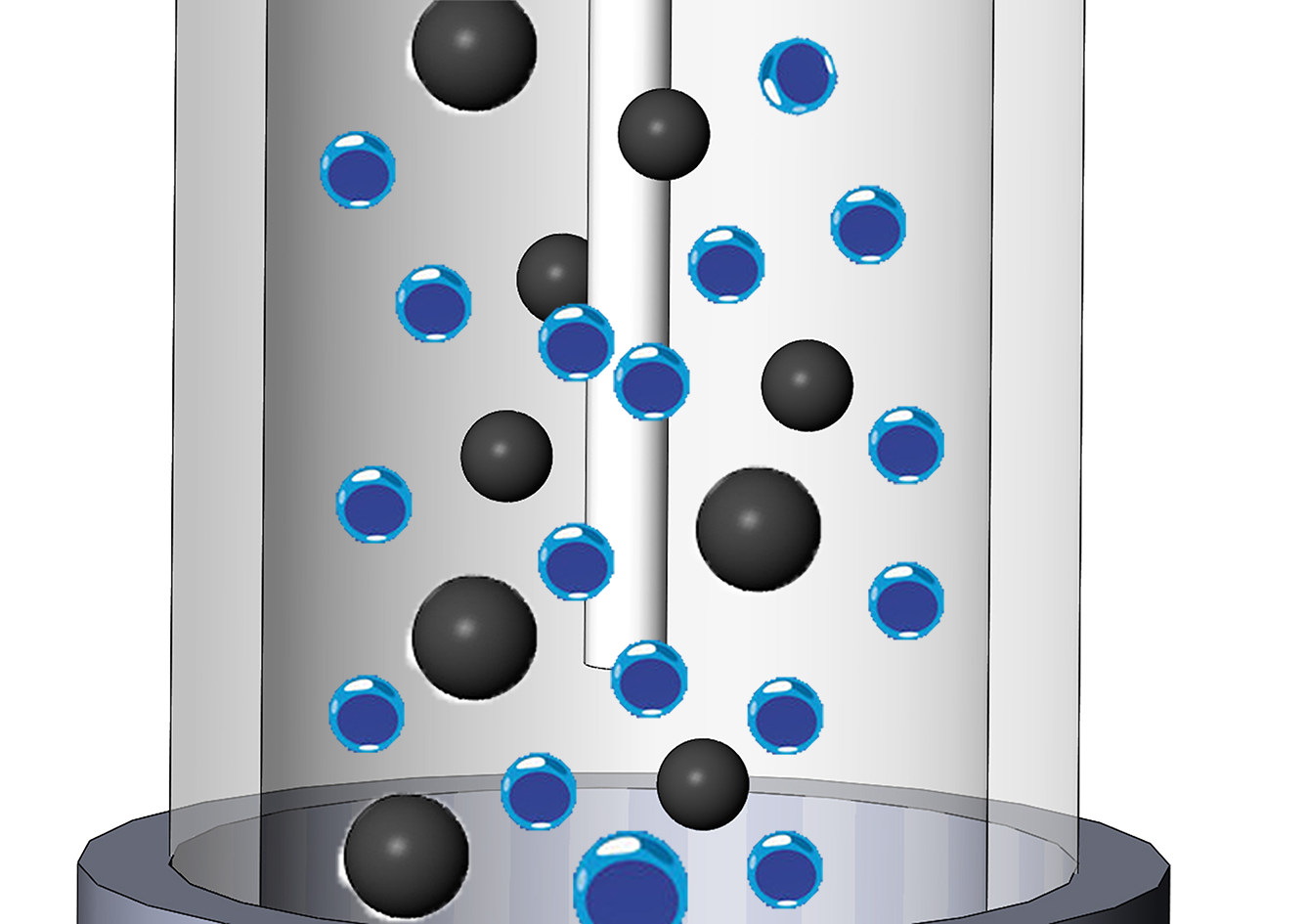At Penn State, we are researching the use of anaerobic membrane bioreactors (AnMBR) that contain a fluidized bed of granular activated carbon (GAC). These anaerobic fluidized bed membrane bioreactors (AFMBRs) were invented by others as a second step in wastewater treatment, which followed wastewater treatment using anaerobic fluidized bed reactors. For our work, we are examining the use of AFMBRs as a second treatment step following treatment using microbial fuel cells (MFCs). While MFCs can treat wastewater and produce electricity, once the COD of the wastewater decreases below ~150 mg/L, the current production is very low. Thus, AFMBRs are ideally well suited to reduce the COD to levels suitable for discharge or water reuse.
The research is addressing: the effectiveness of combined MFC-AFMBR systems; impacts of organic loading on AFMBRs; startup procedures for acclimating the GAC particles; development of aerobic fluidized bed MBRs (AOFMBRs); and nutrient removal in different types of MBRs.
Selected publications from Penn State on x-MBRs
LaBarge, N., Y.D. Yilmazel, P. Hong and B.E. Logan. 2017. Effect of pre-acclimation of granular activated carbon on microbial electrolysis cell startup and performance. Bioelectrochem. 113:20-25. [Supporting information]
Kim, K-Y., W. Yang, Y. Ye, N. LaBarge, and B.E. Logan. 2016. Performance of anaerobic fluidized membrane bioreactors using effluents of microbial fuel cells treating domestic wastewater. Biores. Technol. 208:58-63. [Supporting information]
LaBarge, N., Y. Ye, K.-Y. Kim, Y.D. Yilmazel, P. Hong, P.E. Saikaly, and B.E. Logan. 2016. Impact of acclimation methods on microbial communities and performance of anaerobic fluidized bed membrane bioreactors. Env. Sci Wat. Res. Technol. 2:1041-1048. [Supporting Information]
Ye, Y., N. LaBarge, H. Kashima, K.-Y. Kim, P. Hong, P.E. Saikaly, and B.E. Logan. 2016. An aerated and fluidized bed membrane bioreactor for effective wastewater treatment with low membrane fouling. Environ. Sci. Water Res. Technol. 2:994-1003. [Supporing information]
Ren, L., Y. Ahn, and B.E. Logan. 2014. Domestic wastewater treatment with a two-stage microbial fuel cell and anaerobic fluidized bed membrane bioreactor (MFC-AFMBR) system. Environ. Sci. Technol. 48(7):4199–4206. [Supporting information]

